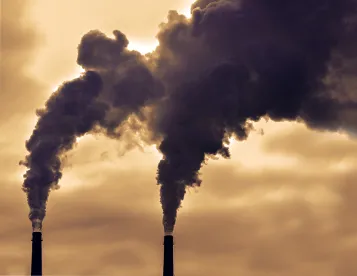While the US has begun considering the implications of the US Supreme Court’s monumental June 28, 2022 opinion addressing air emissions from power plants, without much fanfare US EPA sent a proposed rulemaking to the White House Office of Management & Budget (OMB) for pre-publication interagency review that could be significant for “major source” air permitting.
The proposed rulemaking would address a 2008 Fugitive Emissions Rule that was subsequently granted reconsideration based upon a petition from the National Resources Defense Council (“NRDC”) and then stayed pending US EPA’s reconsideration. The central controversy concerns how (and whether) fugitive emissions are considered under Section 111 of the Clean Air Act, which in relevant part provides:
The term “modification” means any physical change in, or change in the method of operation of, a stationary source which increases the amount of any air pollutant emitted by such source or which results in the emission of any air pollutant not previously emitted.
42 U.S. Code § 7411(a)(4) (emphasis added).
In the waning days of the Bush Administration, US EPA published its Fugitive Emissions Rule that sought to “reconsider” the inclusion of fugitive emissions under this language. “Fugitive emissions” are “those emissions which could not reasonably pass through a stack, chimney, vent, or other functionally-equivalent opening.” By contrast, “stack emissions” generally refers to releases that travel through stacks, vents, ducts, pipes, or any other confined air stream to a discharge point, which may or may not utilize pollution control equipment.
NRDC’s petition for reconsideration argued that the Bush Administration rule weakened the standard for determining major modifications, principally by ignoring the intended broad reach of Section 111(d)(a) principally by only considering fugitive emissions from the source categories specifically listed in the major NSR regulations. A subsequent stay in March 2011 suspended the Rule and reverted to pre-2008 regulatory language pending reconsideration. However, the 2008 Rule was never withdrawn and has remained under US EPA reconsideration since that time.
The proposed rulemaking currently under review at OMB may result in a formal reversion to the pre-2008 language. In that case, US EPA’s Director for its Office of Air Quality Planning & Standards has indicated that the Rule “would require fugitives to be counted in all new and modified major source determinations,” effectively dispensing with the Bush Administration’s limitations on counting of fugitive emissions.
Regardless to what form the rulemaking ultimately takes, the action notably signals movement on several planned air permit reforms by the Biden EPA. For example, despite last year declining to reconsider the Trump EPA’s “Project Emissions Accounting Rule” – allowing both emissions increases and decreases from a major modification at an existing source can be considered during Step 1 of the two-step NSR applicability test – EPA recently stated that it will indeed conduct a discretionary rulemaking to reconsider the rule and has signaled that EPA may curtail the use of such accounting in the future.
Further, US EPA is planning a variety of other actions, such as addressing the Trump EPA’s “Potential to Emit” (PTE) definition, which removed the requirement that PTE limits be federally enforceable, and possibly reinstating the long-standing “once in, always in” (“OIAI”) policy that was scrapped during the Trump Administration. The “OIAI” policy provides that once a facility is classified as a major source for hazardous air pollutants based upon its potential to emit those pollutants, it cannot revert to an area source and thereby avoid requirements under major source rules by reducing its emissions.
The potential impact of US EPA’s planned initiatives may prove significant. The reconsidered Fugitive Emissions Rule discloses a wide range of diverse industry sectors being impacted, such as power generation, oil & gas extraction, paper mills, petroleum refining, chemical manufacturing, coatings operations, and automotive manufacturing.
OMB has 90 days to conduct its interagency review of the Rule. Following interagency review, the Rule would be published in the Federal Register and subject to public comment. The OMB listing indicates a publication date for the proposed rule in November 2022. Nonetheless, for affected parties, the time for engagement is now, and such parties may consider requesting engagement with administration officials to ensure that their concerns are raised as early in the process as possible.




 />i
/>i

